Two distinct fertilized eggs result in the development of fraternal, nonidentical twins. Their major organs begin to grow at 8 weeks after their hearts begin to beat at 6 weeks. At 12 weeks, the twins’ faces begin to take shape with closed eyelids, and at 16 weeks, their sex organs are visible. At 24 weeks, they start to store fat and are growing their lungs and blood cells. The infants develop further and learn to regulate their body temperatures in the weeks that follow. Twins often give birth at 36 weeks, when all body systems are working.
HOW THEY GROW

Fraternal twins develop from the time of implantation until they are prepared to be born, so we asked famous medical illustrator Peg Gerrity to take us inside the womb. Twins develop in the womb on the same same timeline as singletons during the embryonic and fetal stages. Twins’ growth does slow down a bit in contrast to singletons around week 26 of pregnancy because of how congested their environment is!
3 WEEKS: Twins implantation

These kind of nonidentical twins, usually referred to as fraternal or dizygotic twins, are the most prevalent. Every infant develops from a distinct fertilized egg (zygote). Each has its own amniotic sac and placenta.
By three weeks, every zygote has transformed into a blastocyst, a ball of several hundred cells, and is moving into the uterine lining. Your fraternal twins may or may not share the same gender because they have distinct chromosomes.
(In contrast, having identical twins indicates that one egg was fertilized, split in two, and produced two embryos. Although they will share a placenta, they might or might not have individual amniotic sacs. They will have the same gender and appearance because they share the same chromosomes.)
4 WEEKS: Twin embryos

The twins are currently embryos, made up of two layers of cells that will eventually give rise to all of the twins’ organs and body parts. All organs and essential body parts develop during the embryonic stage. The heart is developing, the arms and legs are forming as buds, and the tube that will house the brain and spinal cord has wrapped up. Each embryo will have a placenta and amniotic sac by the following week.
8 WEEKS: Twin embryos
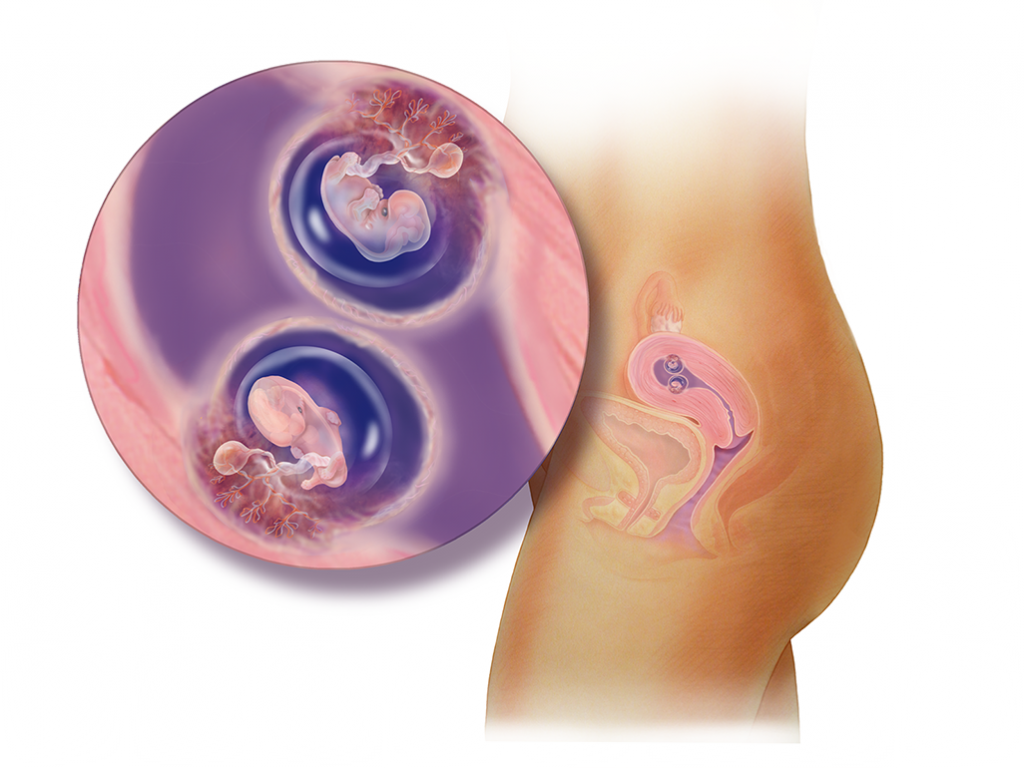
Your twins’ arms and legs can already bend at eight weeks. Their hands, feet, and sex organs are developing. Since two weeks ago, their hearts have been pumping blood through their major vessels. Their brains’ nerve cells are spreading out to connect with one another, and their spinal cord has begun to take shape. The key organs of your unborn child, including their lungs, have all begun to form. No longer an embryo, your child is now referred to as a fetus.
12 WEEKS: Twins in the womb

Your twins are actively kicking and stretching, even though you probably can’t feel it yet. Their tiny fingernails are beginning to grow in, their hands may form fists, and their fingers are forming ridges that will eventually produce distinctive, permanent prints. Their noses, eyes, and upper lips are forming as the tissue around them starts to solidify into bone, giving their features shape. Their eyes are closed, and the tooth buds in their gums have already begun to develop and take root. Their big heads make up nearly half of their size.
16 WEEKS: Twins in the womb

The twins’ heads are growing lanugo, a fine hair type, and their skin is nearly translucent. They have the ability to scowl and sucking gestures. They have started urinating out the amniotic fluid they have been ingesting, and their hearts are beating rapidly. During an ultrasound, their sex organs are visible.
20 WEEKS: Twins in the womb
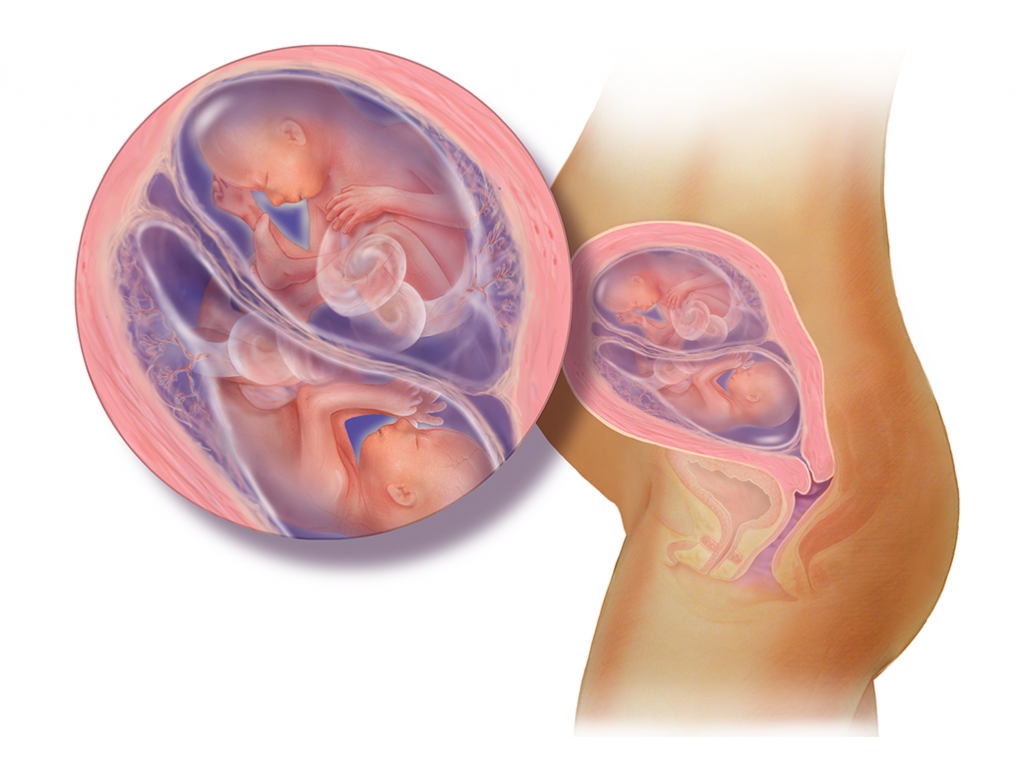
The bulging ears on your twins may let them to hear you now, so speak to them! Their body is now covered in Lanugo. Their skin is forming vernix, a greasy white layer, to shield it from contact with amniotic fluid. Your babies can now accidently scratch themselves with their fingernails because their eyebrows and eyelashes are created. Their first bowel movement after delivery will be meconium, which is a mixture of digestive secretions, shed cells, and ingested amniotic fluid. As they grow bigger, things are beginning to feel a little crowded for them. And now that they’re busier, you might have noticed. If you’d like, the sex of your unborn children will be revealed during your mid-pregnancy ultrasound (due between 18 and 22 weeks). Along with measuring the amount of amniotic fluid, measurements will be made of the babies’ sizes and heartbeats.
24 WEEKS: Twins in the womb
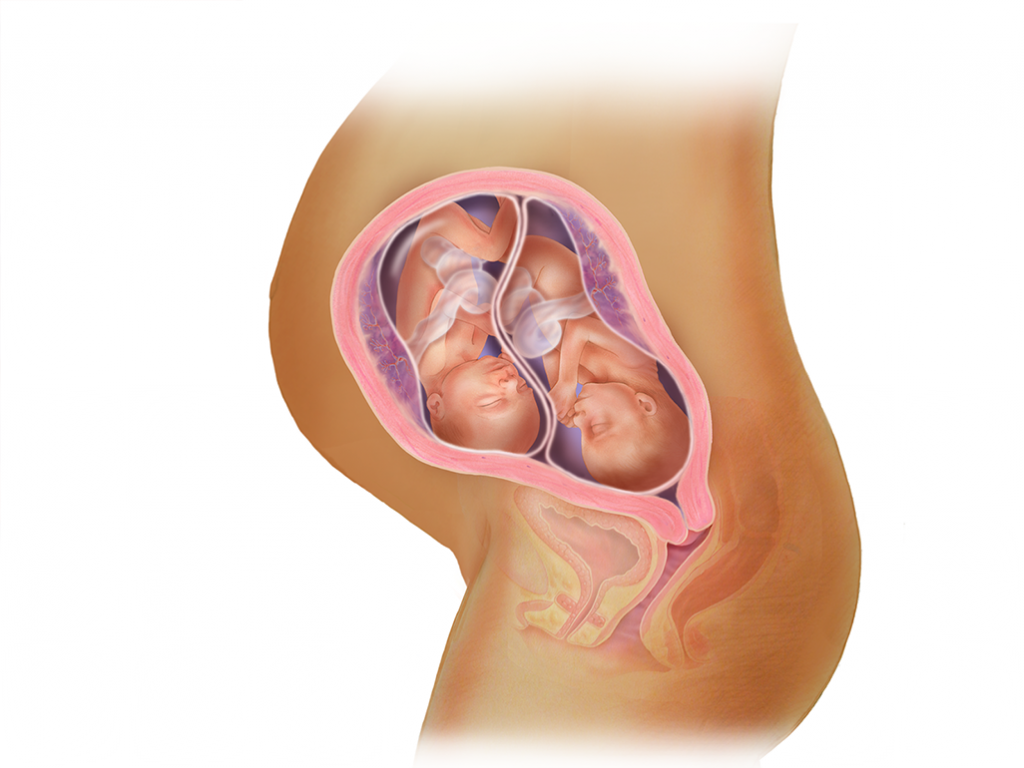
No matter what color it will be when they are born, the skin on your infants is red and wrinkled right now, and their eyebrows are filling in. Their lower airways are growing, and they start to accumulate fat. They are developing more taste buds on their mouths and more hair on their heads. The production of blood cells has begun in their bone marrow. Boy babies’ testicles will fall into their scrotums, and female newborns’ ovaries are currently bursting with eggs. Even though the lungs aren’t fully developed, they are formed. Even things like music or your voice may cause the infants to move.
28 WEEKS: Twins in the womb

The brains of your twins are developing quickly. They can open their eyelids, which now have eyelashes, even though they spend the majority of the day resting (with their eyelids closed). even turn in the direction of a light. Under their skin, layers of fat are accumulating and smoothing it out. You might see them hiccupping and see them perform gripping or sucking gestures with their fingers. Their lungs are still developing.
32 WEEKS: Twins in the womb
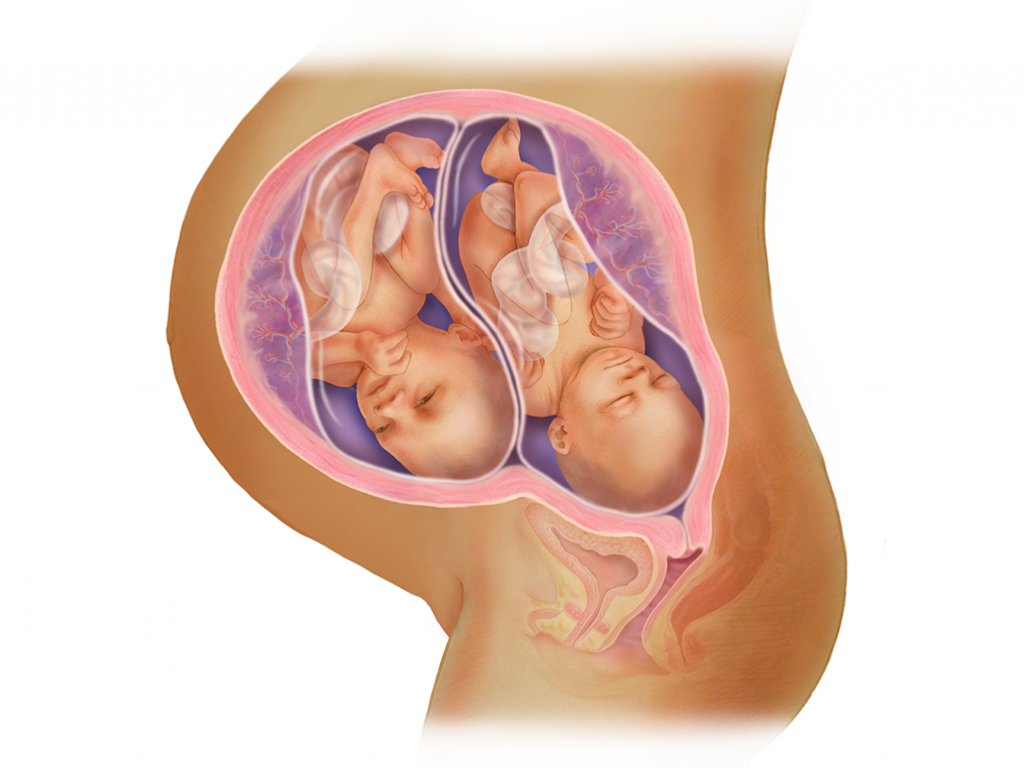
The twins are developing quickly and are putting on weight. Although constructed, their entire skeleton is still soft. In order to help them develop, they are practicing breathing rhythmically by pumping amniotic fluid into and out of their lungs. Your kids’ fingers and toes now have nails on them, and they can open and close their eyes. Their torsos, limbs, and arms are growing larger. By this point, some infants even develop a full head of hair. They are also losing the fine hair that covers their bodies at the same time. One of the last things to develop is the ability to regulate their body temperature, but as their brains mature, they are becoming more adept at it. Their other bones are solidifying, but their heads will remain soft (facilitating an easier delivery).
36 WEEKS: Twins in the womb
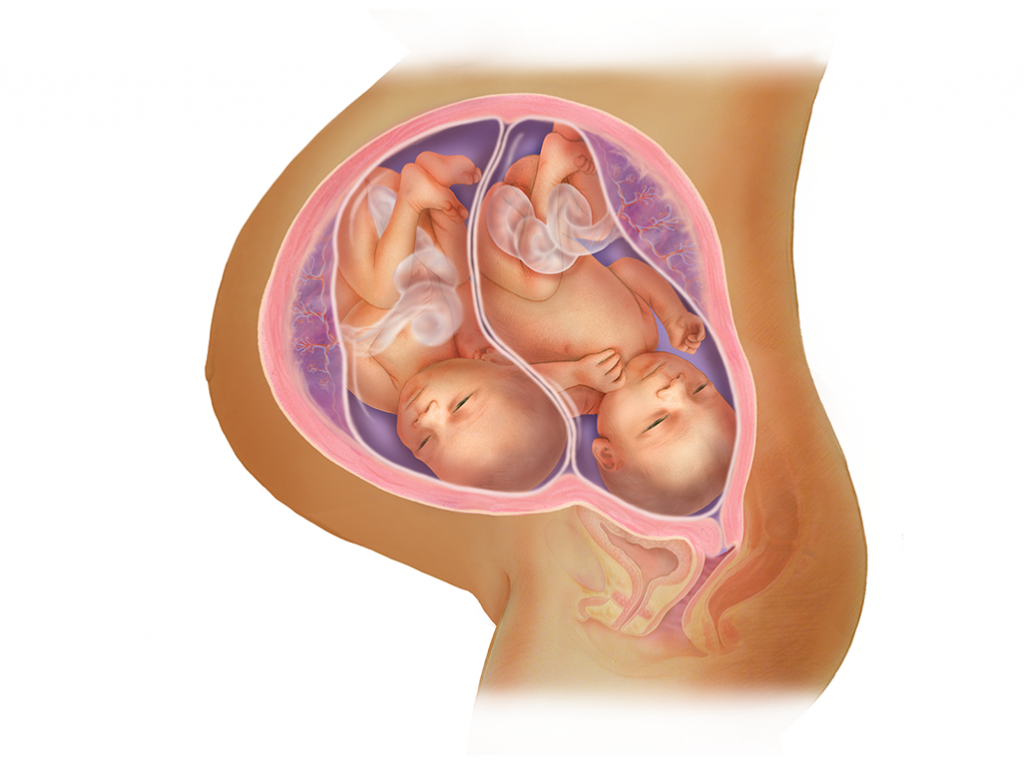
Twins are typically 36 weeks gestational age at birth. By 34 weeks, their lungs are fully formed, and all bodily functions are now active. They spend the last few weeks gaining weight, packing on fat layers, and losing the majority of their body hair. Body fat rises and the vernix, the waxy covering on their skin, thickens. A newborn twin typically weighs 5 1/2 pounds.
See Also: 7 Months Pregnant in Weeks

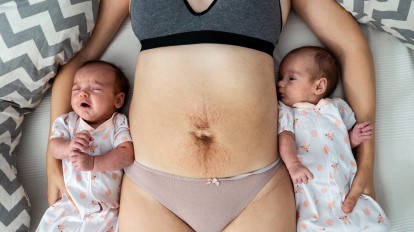


13 Pings & Trackbacks
Pingback:Nextspin สล็อตทำเงิน
Pingback:w88ok
Pingback:buy fryd carts online
Pingback:โฉนดที่ดินเข้าธนาคาร ไหนดี
Pingback:Chinese Medicine Tucson
Pingback:superkaya88
Pingback:เสือมังกร lsm99
Pingback:จำนำ patek
Pingback:ร้านขายสายแลน
Pingback:รับทำวิจัย
Pingback:https://telegra.ph/22bet-casino-review-02-21
Pingback:Trustbet
Pingback:barrett firearms